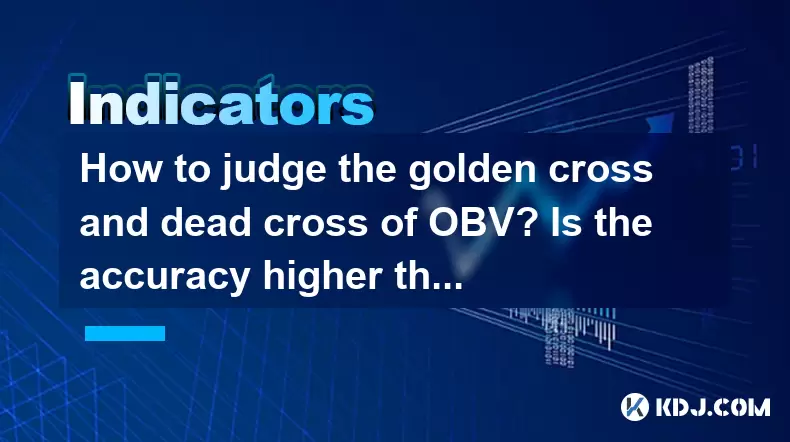-
 Bitcoin
Bitcoin $118000
0.67% -
 Ethereum
Ethereum $3750
0.71% -
 XRP
XRP $3.183
1.61% -
 Tether USDt
Tether USDt $1.000
-0.01% -
 BNB
BNB $788.1
1.21% -
 Solana
Solana $186.0
0.85% -
 USDC
USDC $0.9999
-0.02% -
 Dogecoin
Dogecoin $0.2373
1.25% -
 TRON
TRON $0.3204
1.76% -
 Cardano
Cardano $0.8266
1.85% -
 Hyperliquid
Hyperliquid $44.04
1.28% -
 Sui
Sui $4.192
5.88% -
 Stellar
Stellar $0.4399
2.63% -
 Chainlink
Chainlink $18.40
1.19% -
 Hedera
Hedera $0.2842
9.06% -
 Bitcoin Cash
Bitcoin Cash $560.5
2.46% -
 Avalanche
Avalanche $24.99
4.58% -
 Litecoin
Litecoin $114.5
1.25% -
 UNUS SED LEO
UNUS SED LEO $8.980
-0.03% -
 Shiba Inu
Shiba Inu $0.00001406
0.53% -
 Toncoin
Toncoin $3.306
4.27% -
 Ethena USDe
Ethena USDe $1.001
0.03% -
 Polkadot
Polkadot $4.169
2.37% -
 Uniswap
Uniswap $10.56
1.95% -
 Monero
Monero $322.8
1.06% -
 Dai
Dai $0.0000
0.00% -
 Bitget Token
Bitget Token $4.545
0.12% -
 Pepe
Pepe $0.00001261
1.29% -
 Aave
Aave $296.5
1.27% -
 Cronos
Cronos $0.1379
5.90%
How to judge the golden cross and dead cross of OBV? Is the accuracy higher than the golden cross of the moving average?
OBV indicator uses volume to predict stock price changes; golden and dead crosses signal bullish or bearish trends, respectively.
May 24, 2025 at 01:28 am

The On-Balance Volume (OBV) indicator is a technical analysis tool that uses volume flow to predict changes in stock price. It is based on the theory that volume precedes price movements. The golden cross and dead cross of OBV are significant events that traders watch closely to make buy or sell decisions. In this article, we will explore how to identify these crosses in OBV and compare their accuracy to the golden cross of the moving average.
Understanding OBV and Its Crosses
The On-Balance Volume (OBV) indicator is calculated by adding the day's volume to a running total when the security's price closes higher and subtracting the day's volume when the security's price closes lower. The OBV line moves in the direction of the volume, which can help predict future price movements.
A golden cross in OBV occurs when a shorter-term OBV line crosses above a longer-term OBV line. This is considered a bullish signal, suggesting that the volume is increasing in the direction of the price rise, which could lead to further price increases.
A dead cross in OBV, on the other hand, happens when a shorter-term OBV line crosses below a longer-term OBV line. This is viewed as a bearish signal, indicating that the volume is increasing in the direction of the price fall, which might lead to further price decreases.
Identifying the Golden Cross in OBV
To identify a golden cross in OBV, follow these steps:
- Choose your OBV lines: Typically, you would use a shorter-term OBV line (e.g., 10-day OBV) and a longer-term OBV line (e.g., 30-day OBV).
- Monitor the OBV lines: Watch for the shorter-term OBV line to cross above the longer-term OBV line.
- Confirm the trend: Ensure that the crossover is accompanied by increasing volume and a rising price trend.
For example, if the 10-day OBV line crosses above the 30-day OBV line while the price is also increasing, this would be considered a golden cross, signaling a potential bullish trend.
Identifying the Dead Cross in OBV
To identify a dead cross in OBV, follow these steps:
- Choose your OBV lines: Again, use a shorter-term OBV line and a longer-term OBV line.
- Monitor the OBV lines: Watch for the shorter-term OBV line to cross below the longer-term OBV line.
- Confirm the trend: Ensure that the crossover is accompanied by increasing volume and a falling price trend.
For example, if the 10-day OBV line crosses below the 30-day OBV line while the price is also decreasing, this would be considered a dead cross, signaling a potential bearish trend.
Comparing OBV Crosses to Moving Average Golden Cross
The golden cross of the moving average is another popular technical indicator where a shorter-term moving average (e.g., 50-day) crosses above a longer-term moving average (e.g., 200-day). This is considered a strong buy signal.
When comparing the accuracy of OBV crosses to the moving average golden cross, several factors come into play:
- Volume vs. Price: OBV focuses on volume, which can be a leading indicator of price movements. The moving average, on the other hand, is based solely on price.
- Signal Strength: OBV crosses might provide earlier signals due to volume changes, whereas moving average crosses might be more reliable but slower.
- Market Conditions: The effectiveness of these indicators can vary depending on market volatility and liquidity.
Practical Application of OBV Crosses
To apply OBV crosses in your trading strategy, consider the following:
- Use OBV as a confirmation tool: When you see a potential price trend, use OBV crosses to confirm the trend's strength.
- Combine with other indicators: Use OBV crosses alongside other technical indicators, such as RSI or MACD, to increase the reliability of your signals.
- Adjust time frames: Experiment with different time frames for OBV lines to find the most effective settings for your trading style.
For instance, if you notice a price increase and want to confirm its strength, look for a golden cross in OBV. If the OBV confirms the trend, it might be a good time to enter a long position.
Examples of OBV Crosses in Action
Let's look at a couple of hypothetical examples to illustrate how OBV crosses can be used:
- Example 1 - Golden Cross: A cryptocurrency's price has been steadily increasing over the past few weeks. You notice that the 10-day OBV line has crossed above the 30-day OBV line. This golden cross, combined with increasing volume, suggests that the bullish trend is likely to continue. You decide to enter a long position.
- Example 2 - Dead Cross: A cryptocurrency's price has been declining for several days. You observe that the 10-day OBV line has crossed below the 30-day OBV line. This dead cross, accompanied by increasing volume, indicates that the bearish trend might persist. You decide to sell your holdings or enter a short position.
Limitations and Considerations
While OBV crosses can be valuable tools, they are not infallible. Here are some limitations to consider:
- False Signals: Like any technical indicator, OBV can generate false signals. Always use it in conjunction with other indicators and market analysis.
- Market Context: The effectiveness of OBV crosses can vary depending on the overall market conditions. In highly volatile markets, OBV signals might be less reliable.
- Time Frame Sensitivity: The choice of time frames for OBV lines can significantly affect the signals you receive. Experimentation is key to finding the best settings for your strategy.
Frequently Asked Questions
Q: Can OBV crosses be used for short-term trading?
A: Yes, OBV crosses can be used for short-term trading, but you may need to adjust the time frames of the OBV lines to shorter periods, such as 5-day and 15-day OBV lines, to capture more immediate trends.
Q: How does the OBV indicator handle high-frequency trading?
A: OBV is less suited for high-frequency trading due to its focus on daily volume changes. For high-frequency trading, more granular indicators that can handle tick data might be more appropriate.
Q: Are there any specific cryptocurrencies where OBV crosses work better?
A: OBV crosses can be applied to any cryptocurrency, but they might work better on more liquid assets where volume data is more reliable and less susceptible to manipulation.
Q: Can OBV crosses be used in conjunction with fundamental analysis?
A: Yes, combining OBV crosses with fundamental analysis can provide a more comprehensive view of a cryptocurrency's potential. While OBV focuses on volume trends, fundamental analysis can help assess the underlying value and long-term prospects of the asset.
Disclaimer:info@kdj.com
The information provided is not trading advice. kdj.com does not assume any responsibility for any investments made based on the information provided in this article. Cryptocurrencies are highly volatile and it is highly recommended that you invest with caution after thorough research!
If you believe that the content used on this website infringes your copyright, please contact us immediately (info@kdj.com) and we will delete it promptly.
- XRP Price Check: Altcoin Buzz and Ripple Investors' 2026 Hopes
- 2025-07-27 08:30:12
- BlackRock, Stablecoins, and Institutional Infrastructure: A New York Perspective
- 2025-07-27 08:30:12
- Pi Network: Mainnet Migration Marred by Liquidity Challenges and Binance Listing Speculation
- 2025-07-27 09:10:13
- Kiyosaki's Crypto Call: Navigating the Bitcoin Crash with Gold and Silver
- 2025-07-27 09:10:13
- Bitcoin, Uniswap, Avalanche: Riding the Crypto Wave with a New York State of Mind
- 2025-07-27 09:30:12
- Troller Cat, Meme Coins, and Community Tokenomics: A New Era?
- 2025-07-27 09:35:12
Related knowledge

What signal does the ROC send when it rises rapidly from a low level and breaks through the zero axis?
Jul 27,2025 at 10:15am
Understanding the Rate of Change (ROC) IndicatorThe Rate of Change (ROC) is a momentum-based oscillator used in technical analysis to measure the perc...

What does it mean that the rebound is blocked after the moving average is arranged in a short position for the first time?
Jul 26,2025 at 10:51am
Understanding the Short-Term Moving Average ConfigurationWhen traders refer to a 'short position arrangement' in moving averages, they are describing ...

What does it mean that the parabolic indicator and the price break through the previous high at the same time?
Jul 26,2025 at 07:22pm
Understanding the Parabolic Indicator (SAR)The Parabolic SAR (Stop and Reverse) is a technical analysis tool developed by J. Welles Wilder to identify...

What does it mean that the price falls below the short-term moving average after the RSI top divergence?
Jul 26,2025 at 11:01pm
Understanding RSI Top Divergence in Cryptocurrency TradingThe Relative Strength Index (RSI) is a momentum oscillator widely used in cryptocurrency tra...

What does it mean when the moving average is arranged in a bullish pattern but the MACD bar is shortened?
Jul 27,2025 at 06:07am
Understanding the Bullish Moving Average PatternWhen traders observe a bullish moving average pattern, they typically refer to a configuration where s...

What does it mean when the price rises along the 5-day moving average for five consecutive days?
Jul 26,2025 at 08:07am
Understanding the 5-Day Moving Average in Cryptocurrency TradingThe 5-day moving average (5DMA) is a widely used technical indicator in cryptocurrency...

What signal does the ROC send when it rises rapidly from a low level and breaks through the zero axis?
Jul 27,2025 at 10:15am
Understanding the Rate of Change (ROC) IndicatorThe Rate of Change (ROC) is a momentum-based oscillator used in technical analysis to measure the perc...

What does it mean that the rebound is blocked after the moving average is arranged in a short position for the first time?
Jul 26,2025 at 10:51am
Understanding the Short-Term Moving Average ConfigurationWhen traders refer to a 'short position arrangement' in moving averages, they are describing ...

What does it mean that the parabolic indicator and the price break through the previous high at the same time?
Jul 26,2025 at 07:22pm
Understanding the Parabolic Indicator (SAR)The Parabolic SAR (Stop and Reverse) is a technical analysis tool developed by J. Welles Wilder to identify...

What does it mean that the price falls below the short-term moving average after the RSI top divergence?
Jul 26,2025 at 11:01pm
Understanding RSI Top Divergence in Cryptocurrency TradingThe Relative Strength Index (RSI) is a momentum oscillator widely used in cryptocurrency tra...

What does it mean when the moving average is arranged in a bullish pattern but the MACD bar is shortened?
Jul 27,2025 at 06:07am
Understanding the Bullish Moving Average PatternWhen traders observe a bullish moving average pattern, they typically refer to a configuration where s...

What does it mean when the price rises along the 5-day moving average for five consecutive days?
Jul 26,2025 at 08:07am
Understanding the 5-Day Moving Average in Cryptocurrency TradingThe 5-day moving average (5DMA) is a widely used technical indicator in cryptocurrency...
See all articles

























































































